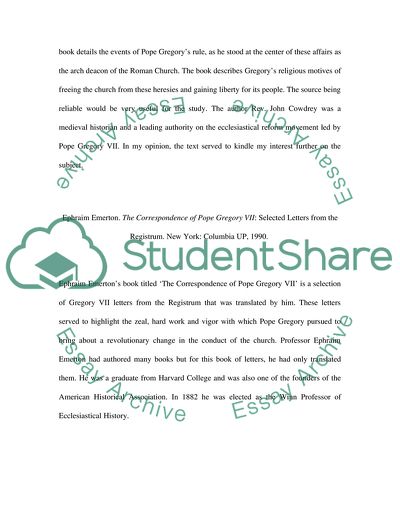Cite this document
(“Pope Gregory VII Research Paper Example | Topics and Well Written Essays - 2500 words”, n.d.)
Pope Gregory VII Research Paper Example | Topics and Well Written Essays - 2500 words. Retrieved from https://studentshare.org/miscellaneous/1574279-pope-gregory-vii
Pope Gregory VII Research Paper Example | Topics and Well Written Essays - 2500 words. Retrieved from https://studentshare.org/miscellaneous/1574279-pope-gregory-vii
(Pope Gregory VII Research Paper Example | Topics and Well Written Essays - 2500 Words)
Pope Gregory VII Research Paper Example | Topics and Well Written Essays - 2500 Words. https://studentshare.org/miscellaneous/1574279-pope-gregory-vii.
Pope Gregory VII Research Paper Example | Topics and Well Written Essays - 2500 Words. https://studentshare.org/miscellaneous/1574279-pope-gregory-vii.
“Pope Gregory VII Research Paper Example | Topics and Well Written Essays - 2500 Words”, n.d. https://studentshare.org/miscellaneous/1574279-pope-gregory-vii.


